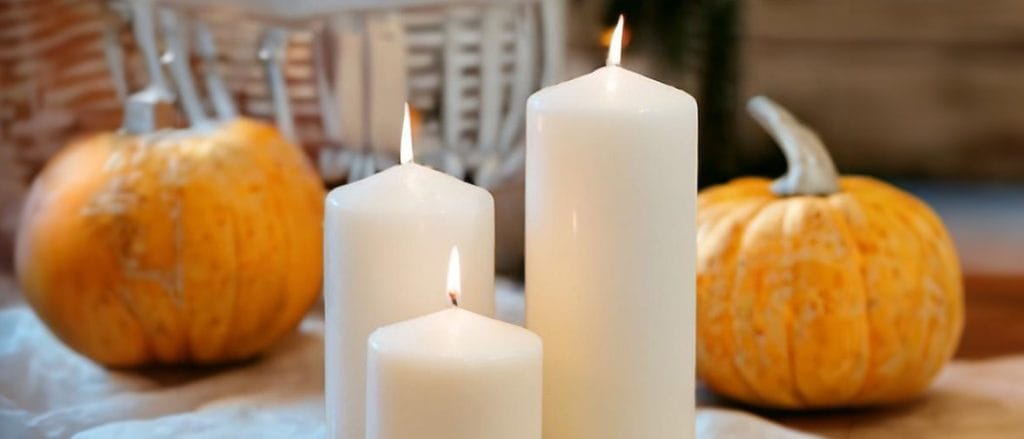Halloween, with all its eeriness and costume-clad revelry, has fascinated us for centuries. In today’s world, the image of carved pumpkins and ghosts dominate the celebration. But this beloved holiday has roots running far deeper than the spooks suggest.
Long before it became the fun festivity that it is today, Halloween was known as All Hallows’ Eve, a much more solemn event that preceded All Saints’ Day.
All Hallow’s Eve was dedicated to the remembrance of the departed, acting as a night when the veil between the living and the dead was at its thinnest.
Candles played an instrumental role in guiding these spirits back to their loved ones. These same candles, once used to connect the living and the dead, now act more as ghostly decoration, serving instead as a nod to the past and a celebration of the present.
Let’s take a closer look at how candles have shaped this quintessential autumn holiday, to make it the Halloween we know and love today.
Candles: The Guiding Light of All Hallows’ Eve
At the heart of All Hallow’s Eve were the candles. As we know, they played a crucial part in guiding souls of the departed back to the realm of the living. They would be placed in windows, creating a welcoming path for spirits to follow.
This practice of lighting candles during Halloween – as we all know – has not entirely been lost in the modern day. Today we adorn our homes with Jack-o-lanterns, carved pumpkins illuminated from the inside by a single, solitary candle.
The Legend of Stingy Jack
With its origins tracing back to Ireland, carving pumpkins with menacing grins is one of the most iconic and enduring Halloween traditions – and it all has to do with a fellow known as Stingy Jack.
If legend is to be believed, Stingy Jack was cunning, known for his propensity to outwit man and the supernatural alike. One day, he even crossed the devil, trapping him in a coin and a tree, before releasing him on the condition that he never claim Jack’s soul.
But when Jack did eventually die, he found himself barred from both heaven and hell, bound to walk between realms forever. Wandering with nothing but a single ember from the fires of hell in a hollowed-out turnip (courtesy of the devil) to light his way.
In Ireland, people began to carve grotesque faces on turnips and other root vegetables, placing a lit candle inside to create their own makeshift lanterns. Being more readily available, pumpkins made an ideal replacement.
Thus the Jack-o-lantern was born, ready to scare away evil entities that roam freely on All Hallows’ Eve.
Modern Halloween: Blending tradition and fun
As centuries passed, Halloween saw numerous transformations. In the US, it became a melting pot of cultural influence, as Irish immigrants brought their traditions with them.
Over time, Halloween became a festive occasion for all – known for costumes, trick-or-treating, and decoration. Its origins may not be widely known in the contemporary world, but Halloween’s rich history is a testament to the enduring power of tradition and the human connection to the spirit world.
As we continue to embrace the tradition of lighting candles during Halloween, we’ve even seen a modern twist with scented candles. Fragrant notes infuse our homes with the more cosy scents of the season such as cinnamon and pumpkin spice.
So, this Halloween, as you put the finishing touches on your costume, carve your pumpkin, and light your autumn-scented candle, take a moment to reflect on the age-old connection that lies beneath the spooky exterior.





